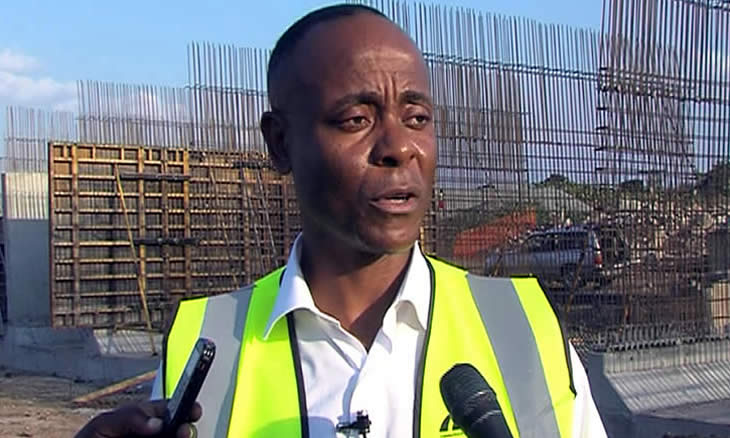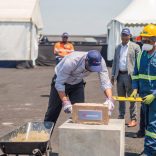Barcelona renews confidence in Maputo through metropolitan cooperation agreement
Machatine lays foundation stone of second Locumue Dam

Photo: O País
Minister João Machatine expects the new 494 million meticais venture to double the capacity of the water supply system in Niassa province.
The Locumue Dam in Niassa was built in the 1960s – for irrigation purposes, at the time. Some ten years later it became the main source of water for the city of Lichinga.
Forty years later, the dam is less able to supply the 242,204 inhabitants of that part of the country, bringing the executive to decide to spend 494 million meticais to build a new, larger dam in the same location.
The Minister of Public Works, Housing and Water Resources, João Machatine, said that the idea was to more than double the volume of the reservoir from its current 1.76 to 3.4 million cubic meters, “doubling water supply capacity from 4,200 to 8,500 cubic meters per day”.
This will make water available to about 50,000 people and “raise the coverage rate from the current 21% to 43%, in the first phase”.
The Maputo executive hopes to complete the project by March of 2021.
The works will consist of the construction of an earth dam 750 metres long and a maximum of 21 metres in height; a water intake with catchment tower, an 800m overflow pipe with a reinforced concrete base and a flood discharger and road.
The project is being carried out within the scope of the Pravida program, a recently launched government initiative to accelerate the construction and rehabilitation of water supply, sanitation and storage infrastructure.
Water supply and sanitation systems benefiting 187,000 people in the cities, towns and villages of Niassa province are being rehabilitated in the same Pravida programme, Machatine said.
“The recently implemented strategy for the development of the waters of the Lúrio Basin, covering the districts of Mawuwa, Mandimba, Metarica, Cuamba, Mecanhelas, Marrupa and Nipepe, will guide the upgrade, protection and balanced management of water, with a focus on the sustainable development of water resources,” Machatine explained.
By Afonso Chavo












Leave a Reply
Be the First to Comment!
You must be logged in to post a comment.
You must be logged in to post a comment.